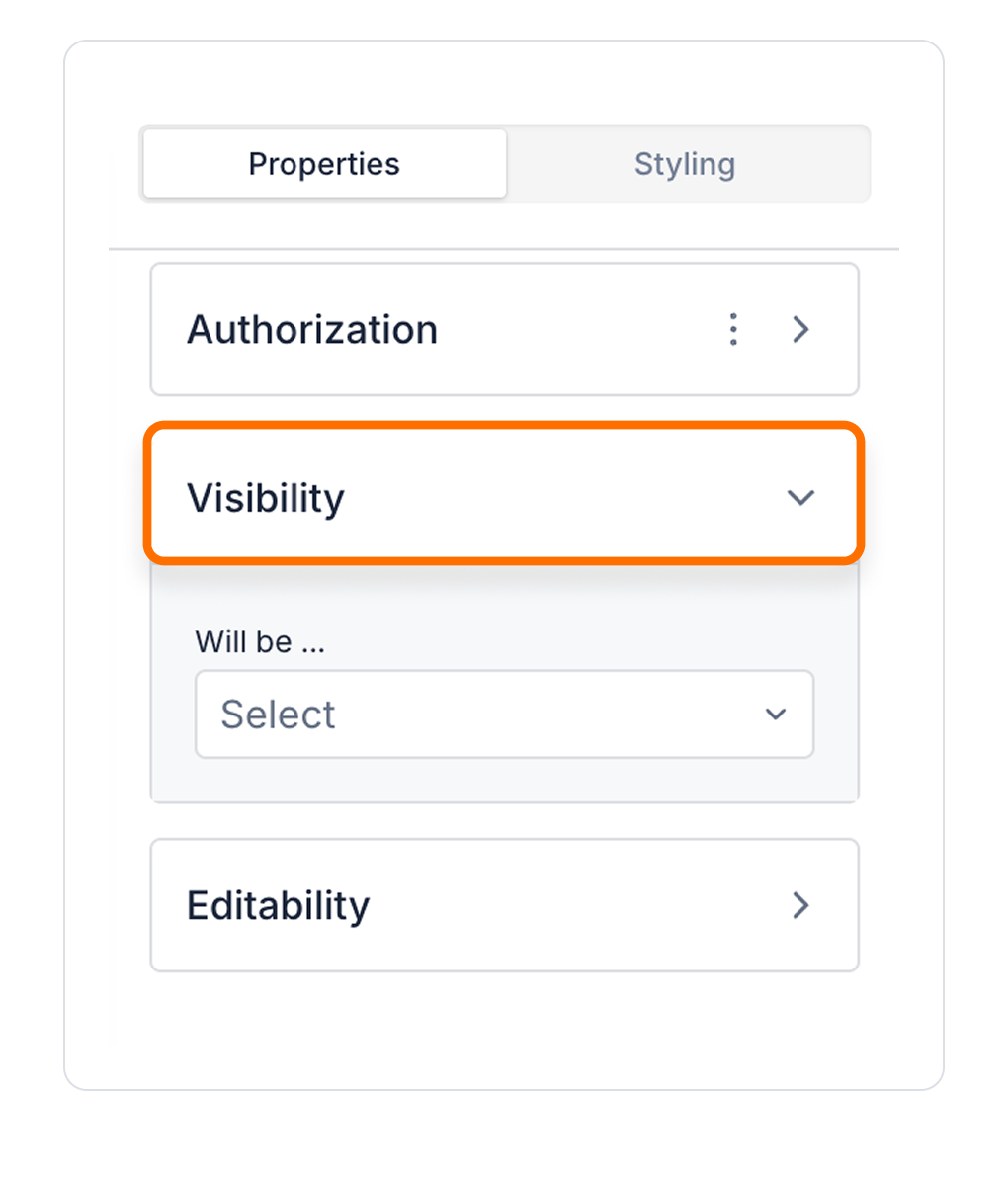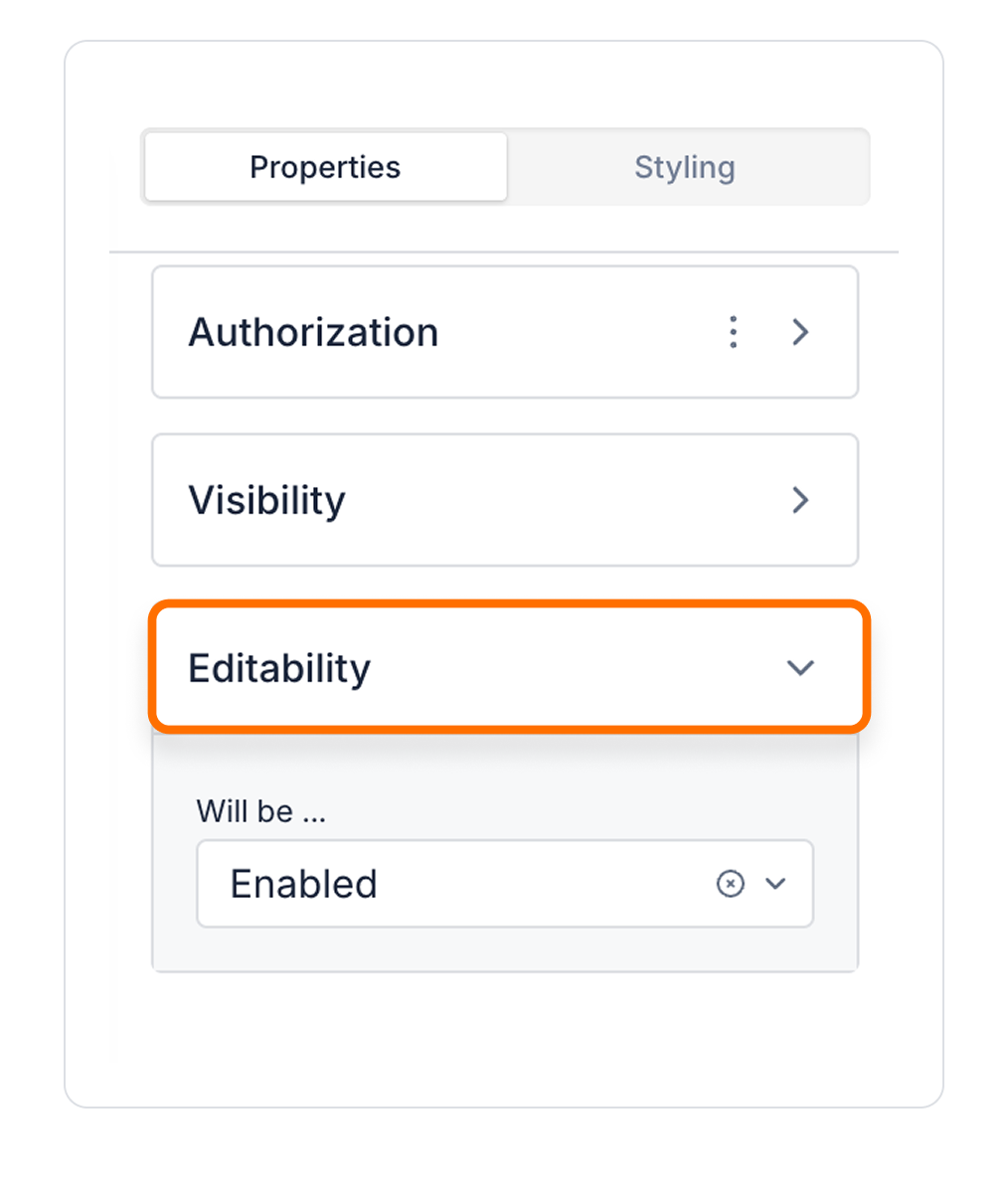


Kuika's Countdown element is used to count down a specific time interval. This element is ideal for showing the time remaining until the start of events, deadlines or special occasions. It offers a visual countdown to grab users' attention and make time management easier. For example, it can be used to show the time remaining until the start of an event or the end of a campaign. In this tutorial, you will learn how to use the Countdown element to create a countdown timer in your application.

You can configure the properties of the Countdown element in the Properties panel on the right sidebar.

These hour, minute and second formats provide a standardized structure for accurate display of the countdown. You can choose the appropriate format according to the needs of your application.
Authorization

To manage access control at the element level, you can use the Authorization section in the Properties panel.
Access Types
Anonymous
Allows all users to view the element without logging in.
Restricted
Restricts access to only verified users or specific roles.
Unauthorized Behavior (Hide / Disable)
If the user does not have the required role, you can specify how the element should behave in the Choose field:
This setting is used to manage how unauthorized users encounter the element.
Visibility

Always Visible: The element is always visible.
Hidden: The element is hidden.
Sometimes Visible: The element becomes visible based on specific conditions.
When Sometimes Visible is used, AND / OR groups can be added directly, allowing visibility rules to be grouped and more complex scenarios to be managed easily.
To configure the setting:


By customizing your elements with the Styling Panel, you can create impressive interfaces for your web and mobile applications. In this section, you can configure the following settings:
By following these steps, you can configure the Area Chart element to suit your needs.